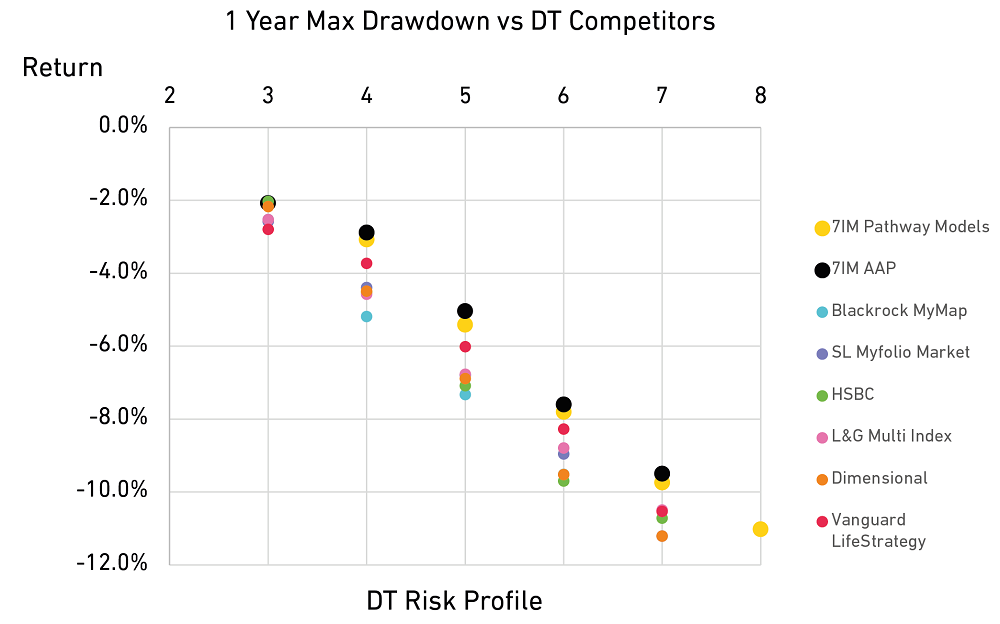
Don’t rush to react to coronavirus chaos
The coronavirus is not going to be dealt with quickly, nor is the economic fallout. Financial markets are coming to terms with that fact, but it has been another volatile week.
7IM portfolios continue to outperform peers in these volatile markets. Our diversified strategic asset allocation is key – with assets such as Emerging Market Bonds and High Yield Bonds being resilient compared to the sharp declines in equities.
We have diversified portfolios that are currently performing well. If the sell-off continues, we believe that will continue – and may offer us some interesting opportunities over the next few months
Our Tactical Asset Allocation is adding further outperformance.
- Our alternatives portfolio has been positive too – rising during recent days, and providing diversification.
- Healthcare companies continue to act defensively, outperforming the wider equity indices on the way down, and keeping pace during rallies.
We are reviewing the portfolios every day in light of the changing news flow. We are first of all concerned with protecting our clients’ capital – and the SAA is a great foundation to do so.
We’re also aware that volatile markets often throw up tactical opportunities – sometimes to take profits where positions have outperformed, and sometimes to invest in oversold assets. We will keep you posted on any changes we make.
Markets
Every day this week, the US equity market has moved by more than 2.5% in one direction or another. During actual trading hours, movements have been even more dramatic – and often apparently illogical.
On 3 March, most global equity markets were up on the expectation that central banks were likely to take action and ease policy. The Federal Reserve duly cut interest rates by 0.5%, outside of its regular meeting schedule, in order to tackle the “material change” in the economic outlook. Yet the US equity market fell sharply following the announcement, moving from a 1% gain to a 3% decline in a matter of hours.
Those kind of market movements tell us that investors have no idea how to price the risk of a pandemic, and its impact on policymakers.
Responses to coronavirus
From a few isolated cases in China, coronavirus has now become a global problem, creating uncertainty everywhere.
- Government health departments are trying to work out how to stop the virus spreading, and to deal with the medical issues on a national scale. How seriously should they tell people to take this?
- Government finance departments are trying to work out the direct costs of dealing with the virus, whilst also trying to judge the amount of help needed to keep the domestic economy moving: How much can they afford to spend?
- Central banks are trying to work out the global economic impact of the virus – which isn’t covered in textbooks: What does a pandemic mean for monetary policy?
- Businesses are trying to work out whether they can continue to operate in the face of falling demand and health risks to their staff: How long can individual companies tread water?
At the moment, the answers to these questions are thoroughly murky. There’s simply not enough information out there. China is sending people back to work, while California is declaring a state of emergency. The Federal Reserve is cutting rates, but other central banks are hesitating. Some companies are sending their staff home, others are business as usual. There are lots of mixed messages.
So while some traders have been trying to work out all of the answers to the questions above this week – guessing and second-guessing every new announcement or piece of information released – we don’t believe that’s sensible.
We have diversified portfolios that are currently performing well. If the sell-off continues, we believe that will continue – and may offer us some interesting opportunities over the next few months.
Performance
The charts below show the 1 year max drawdown of 7IM’s product ranges vs the closest and most notable competitors – a blend of DT-rated peers and other managers.
Max drawdown means we can ignore the timing issues mentioned on Monday morning. The story is consistent whether you are looking Pathway, AAP or Multi-Manager (not on chart).

Source: 7IM
Why max drawdown?
Maximum drawdown is a key indicator of risk in a portfolio. It measures the maximum % negative return from peak to trough. 1 year max drawdowns for example will have occurred recently due to the coronavirus, and will be somewhere between 20 February and 3 March, depending on the portfolio in question.
Even if markets and returns recover, you can’t hide from the drawdown experienced in late February, and that will be in the numbers for some time. This episode helps to prove shows that we strategically diversify our risk compared to most of our DT peers, and that DT risk profiling is far from perfect.
I confirm that I am a Financial Adviser, Solicitor or Accountant and authorised to conduct investment business.
If you do not meet this criteria then you must leave the website or select an appropriate audience.
